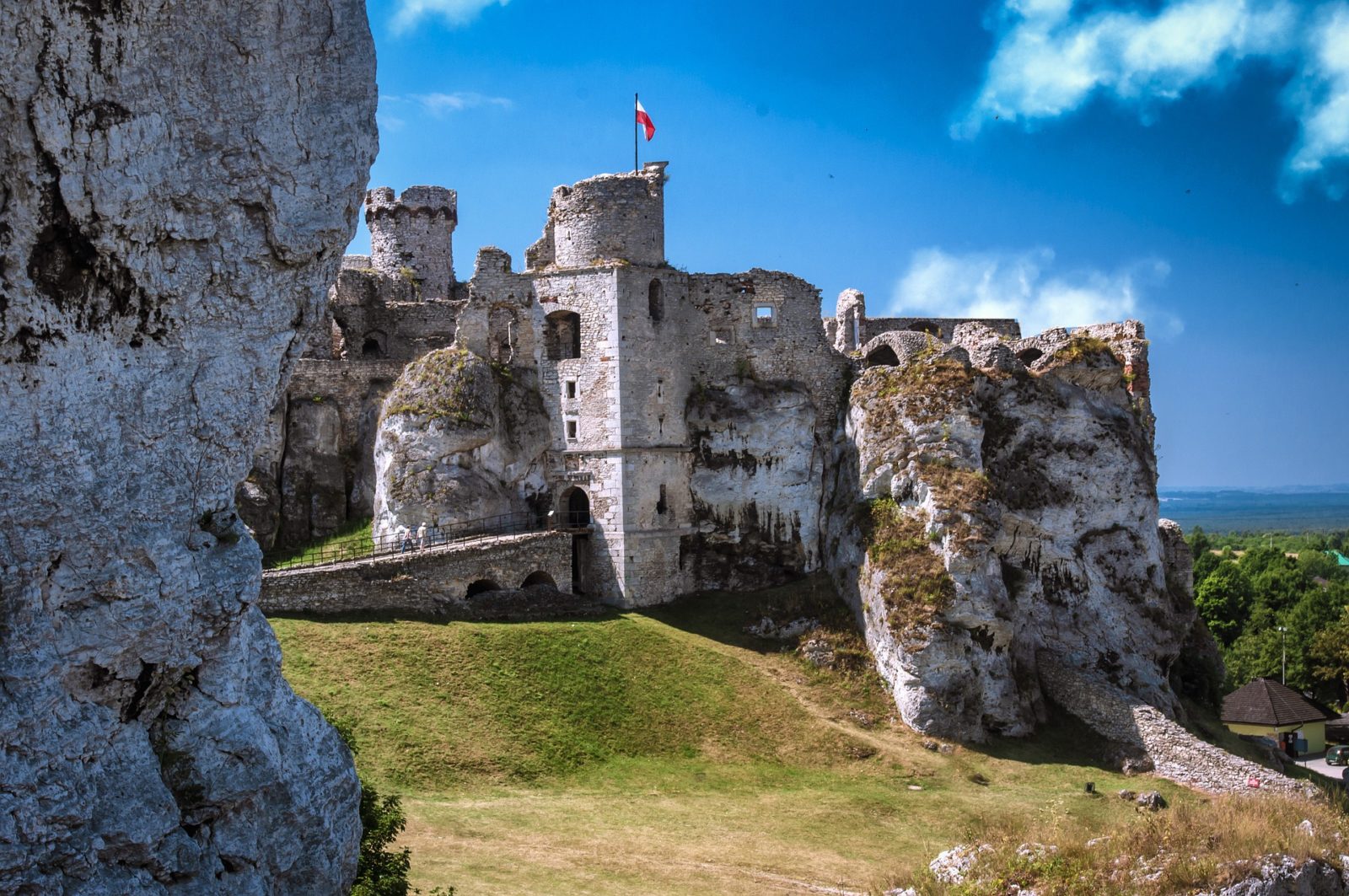
Experience an unforgettable adventure along the trail of medieval castles in Silesia Region and Lesser Poland. The best way to explore this 190-kilometer trail is on a bike. Almost every attraction on the route is associated with a legend that gives an aura of mystery to the Krakow – Częstochowa Upland. Castles on the Trail of the Eagles’ Nests, fanciful rock outliers and caves full of bats, apart from their natural beauty, wrapped in folk stories, become even more attractive.
Our trail will also include the Ojcowski National Park. You will admire the Prądnik Valley – a gallery of extraordinary karst works. It is the most beautiful valley of the Kraków – Częstochowa Upland. A karst ravine with perpendicular rocky slopes and a flat bottom, built of 150 million-year-old limestone. Experience a fairytale bicycle adventure with us!
Attractions and programme of the bike tour:
Transfer by bus with bikes from Cracow to Olsztyn (distance on bike approx. distance: 40 km)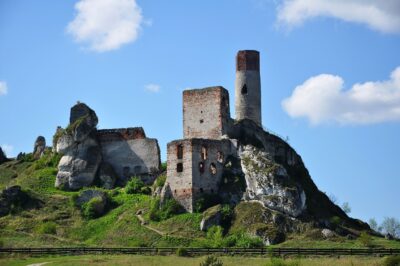
Olsztyn Castle – Olsztyn Castle The ruins of the Olsztyn castle near Częstochowa are among the most recognizable Jurassic strongholds. It has the cylindrical, 35-meter-high tower attracts attention from afar. Built of white limestone and with a brown brick superstructure, The castle in Olsztyn was built on the rocks in the second half of the 13th century, as one of the elements of the defense system of Lesser Poland from the Silesian side. The King Casimir the Great expanded it significantly. As the castle perfectly fulfilled the task entrusted to it, the Jagiellonians also took care of its good condition.
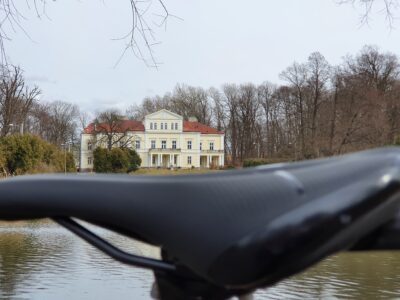 The castle was destroyed during the Swedish Deluge and then the Great Northern War in XVIII century. The plundered stronghold never returned to its former glory. The outlines of many of these buildings have survived to this day, but the most impressive are the two towers.
The castle was destroyed during the Swedish Deluge and then the Great Northern War in XVIII century. The plundered stronghold never returned to its former glory. The outlines of many of these buildings have survived to this day, but the most impressive are the two towers.
Wiercica Valley – Złoty Potok – The Wiercica Valley stretches out from the Złoty Potok and Janów to foot of the Ostrężnik castle. It is one of the most beautiful parts of the Kraków-Częstochowa Upland. Tourists are enchanted by the clean water of Wiercica, beautiful forests and limestone rocks with fanciful shapes. In Złoty Potok you can visit a charming manor house, and admire the Raczyński Palace next door.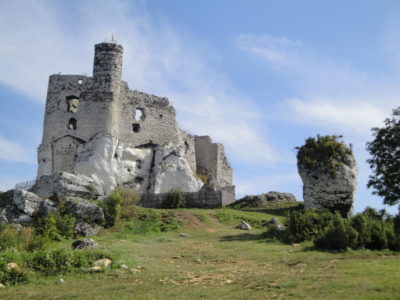
Mirów Castle – you can admire it closely from the outside, because is not open to the public. The ruins standing on the hill are also an excellent viewpoint of the surrounding area. Initially, it was a stone watchtower. It belonged to the noble family of Lis. In 1587, the castle was captured by Archduke Maximilian Habsburg, pretender to the Polish throne. From then on, the stronghold began to gradually decline. The castle in Mirów also suffered greatly during the Swedish deluge.
Bobolice Castle – one of the most impressive castles on the Trail of the Eagles’ Nests, especially since it has recently been reconstructed. 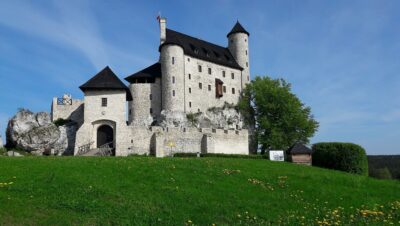 It was built, like other castles, in the 14th century on behalf of Casimir the Great. The castle was intended to secure the surrounding dominions and defend Lesser Poland against invasions from Silesia, which then belonged to the Czech Crown. The castle changed hands many times, and during the Swedish Deluge and subsequent Swedish wars in the 17th century, it was repeatedly attacked. In 1661 it was abandoned and fell into ruin.
It was built, like other castles, in the 14th century on behalf of Casimir the Great. The castle was intended to secure the surrounding dominions and defend Lesser Poland against invasions from Silesia, which then belonged to the Czech Crown. The castle changed hands many times, and during the Swedish Deluge and subsequent Swedish wars in the 17th century, it was repeatedly attacked. In 1661 it was abandoned and fell into ruin.
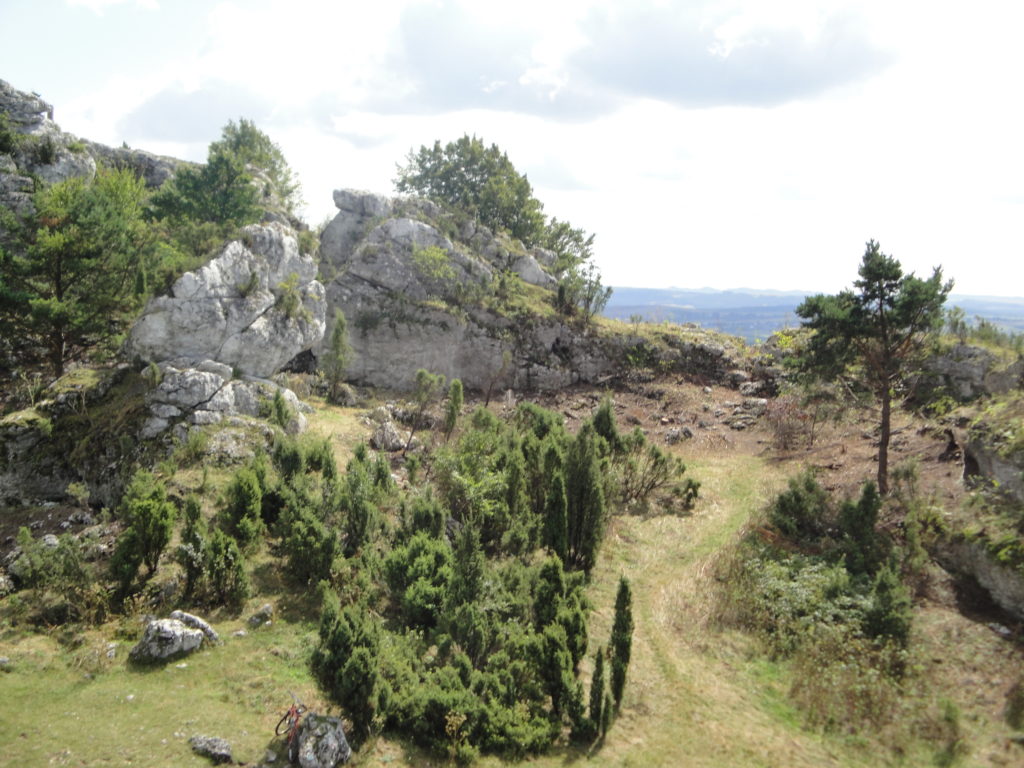 Day 2: Bobolice – Pilica (distance approx. distance: 47 km)
Day 2: Bobolice – Pilica (distance approx. distance: 47 km)Bąkowiec Castle in Morsko – the ruins of the “Bąkowiec” knight’s castle dating from the 14th–15th centuries are located in the “Morsko Plus” recreation center. The local lands changed hands many times. The castle was thoroughly expanded at the turn of the 16th and 17th centuries, and perhaps even rebuilt from scratch, by the Włodek family. However, already in the 17th century (after the Swedish invasion), the fortress began to fall into ruin.
Ogrodzieniec Castle – the impressive ruins of the castle are located on the highest hill of the Kraków-Częstochowa Upland – Góra Zamkowa, rising to 515,5 m above sea level. 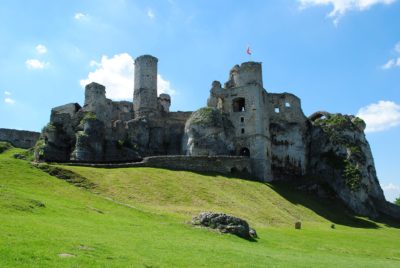 The castle layout was perfectly integrated into the surroundings: it was protected by high rocks on three sides, the perimeter was closed by a stone wall, and the entrance was a narrow gap between the rocks. The stronghold was managed by some of the richest merchant families in the times of the Jagiellonian dynasty. This stronghold also suffered during the Swedish Deluge and subsequent wars. It was finally abandoned in 1810.
The castle layout was perfectly integrated into the surroundings: it was protected by high rocks on three sides, the perimeter was closed by a stone wall, and the entrance was a narrow gap between the rocks. The stronghold was managed by some of the richest merchant families in the times of the Jagiellonian dynasty. This stronghold also suffered during the Swedish Deluge and subsequent wars. It was finally abandoned in 1810.
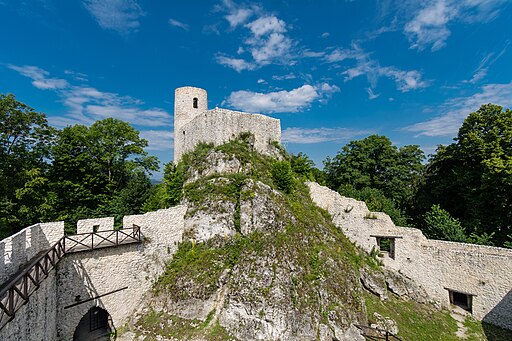
Bydlin Castle – at the top of the hill here, you will find large fragments of the walls of a building. 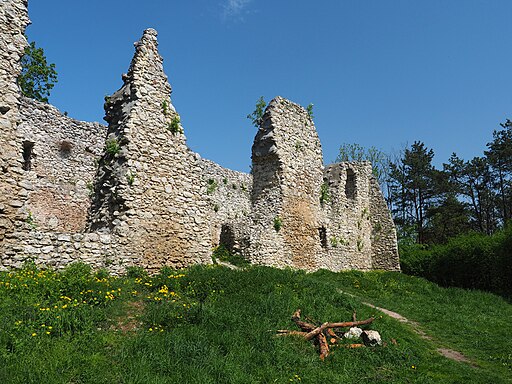 It was probably built in the 14th century as a watchtower to strengthen the borders with Silesia. The castle built by served as a defensive residence for 200 years. Then it was rebuilt into a church, then serving as an Arian congregation and again as a Catholic temple. In 1665 Swedes demolished residance. It was rebuilt, but at the end of the 18th century it was abandoned and fell into ruin.
It was probably built in the 14th century as a watchtower to strengthen the borders with Silesia. The castle built by served as a defensive residence for 200 years. Then it was rebuilt into a church, then serving as an Arian congregation and again as a Catholic temple. In 1665 Swedes demolished residance. It was rebuilt, but at the end of the 18th century it was abandoned and fell into ruin.
Błędowska Desert – the largest area of quicksand in Poland. It is less than 10 km long and up to 4 km wide. Melting glaciers 2-3 million years ago deposited sand resources here. Then the area was covered with forests. 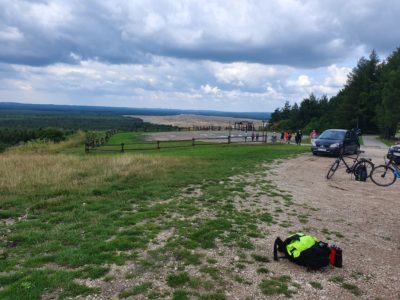 Demand for wood and cutting down trees in the 18th century exposed loose post-glacial sands and initiated new natural processes, e.g. the formation of typical desert dunes. Currently Błędowska desert is protected. It forms an attractive tourist area with several viewpoints.
Demand for wood and cutting down trees in the 18th century exposed loose post-glacial sands and initiated new natural processes, e.g. the formation of typical desert dunes. Currently Błędowska desert is protected. It forms an attractive tourist area with several viewpoints.
Castle in Rabsztyn – the name of the castle comes from German “Rabstein” and means “The Raven Rock”. Built in the 13th century on a limestone rock, it was expanded in the following centuries. In the 16th century, it was rebuilt by its owners in the Renaissance style.
Today’s ruins are the remains of a palace from the turn of the 16th and 17th centuries. 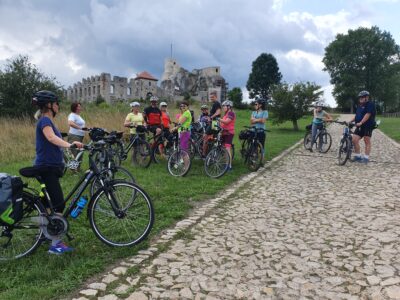 Like most of the castles on the route, it was burned down by the Swedes in 1657. The castle was burned down by the Swedes. Since then it has fallen into ruin. The pictures to the film Karol. The Man Who Became Pope, directed by Giacomo Battiato, were taken among the ruins of the castle in Rabsztyn.
Like most of the castles on the route, it was burned down by the Swedes in 1657. The castle was burned down by the Swedes. Since then it has fallen into ruin. The pictures to the film Karol. The Man Who Became Pope, directed by Giacomo Battiato, were taken among the ruins of the castle in Rabsztyn.
Pieskowa Skała Castle – a pearl of the Renaissance with a collection of works of art, with an arcade courtyard and an elegant Italian garden. This is next castle on the trail of Eagles’ Nests. 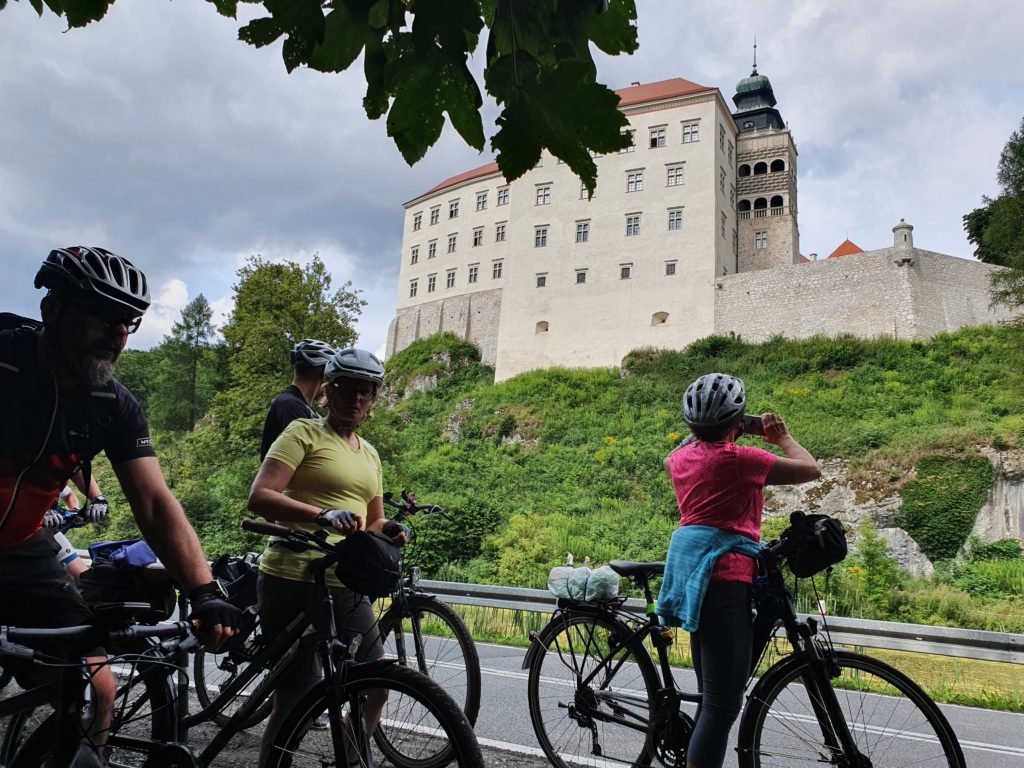 It once belonged to the Szafraniec family, exclusively decorated to resemble the royal castle at Wawel.
It once belonged to the Szafraniec family, exclusively decorated to resemble the royal castle at Wawel.
Hercules’ Club – is the most recognizable rock formation in the Ojców National Park. Together with other fanciful creations of nature, such as the Glove, the Mercy, or the Needle of Deotyma, it is a limestone inselberg formed as a result of rock erosion. The club grows out of the ground under the castle in Pieskowa Skała, on a terrace – the so called “Piano”.
Ojcowski National Park: it is a small heatlh resort village with with several historic villas. Famous Polish writers and composers came here: Franciszek Karpiński, Jan Ursyn Niemcewicz, Fryderyk Chopin and Cyprian Kamil Norwid.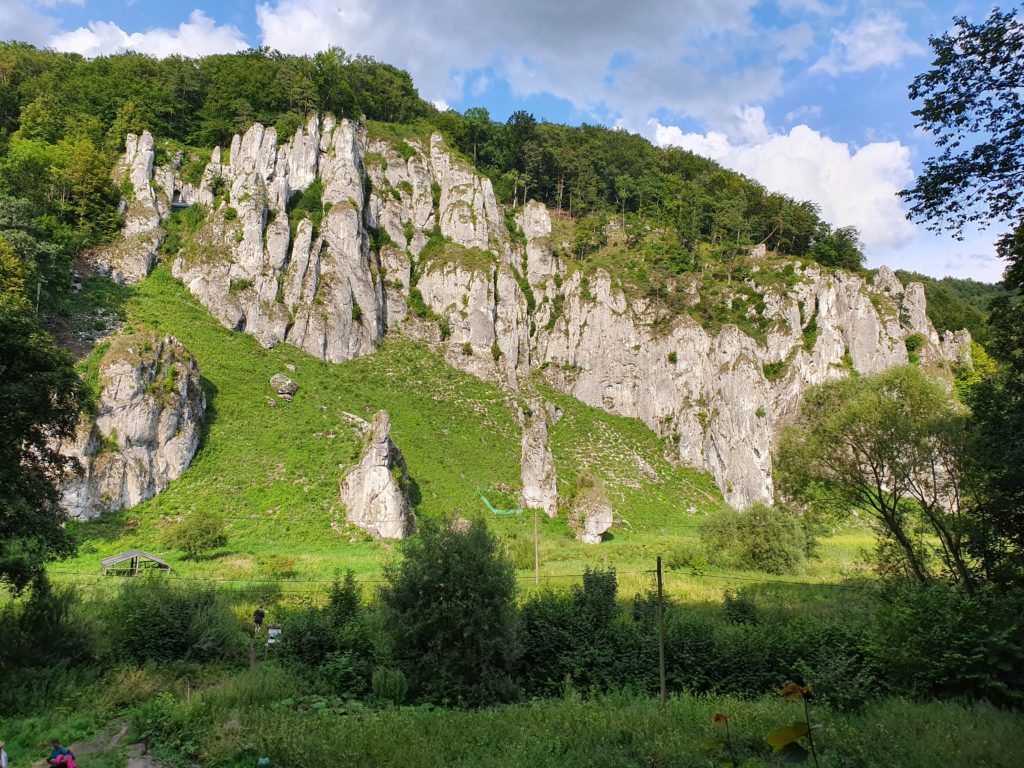
Here you will find a gothic fortress Ojców and the Chapel on the Water, from 1901, which was built in place of the no longer existing bathrooms for residents. The Prądnik Valley is full of numerous rock formations and caves.
“Krakow Gate” – created by nature, defended the trade route from Silesia to Krakow. 15 m high limestone rocks majestically open trails to some of the most beautiful regions of Poland. Behind the rocks there are two gorges – Skalbania and Ciasne Skałki – and next to it the famous spring of love.
Sightseeing of Cracow – the former capital of Poland:
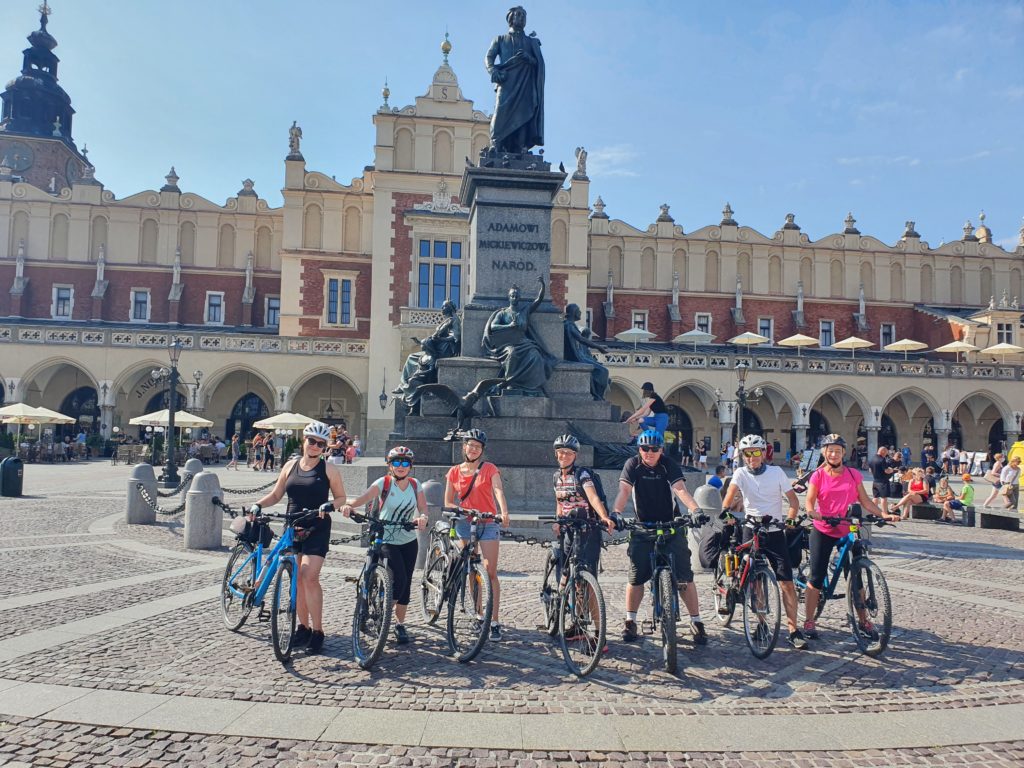 Old Town – The main Square, Grodzka Street, Cloth Hall, Town Hall Tower, The Basilica of the Assumption of the Blessed Virgin Mary
Old Town – The main Square, Grodzka Street, Cloth Hall, Town Hall Tower, The Basilica of the Assumption of the Blessed Virgin Mary
Wawel Royal Castle and Basilica of Wenceslas – here you will find the Polishnational treasures, roots of statehood, from here Polish kings ruled for centuries, here is their final resting place place. Legend has it that the Wawel dragon lived there.
Road surface: asphalt roads 60% of the tour, the rest gravel roads
Daily distance: approx. 40 – 58 km
Whole distance of the bike tour: approx.: 190 km
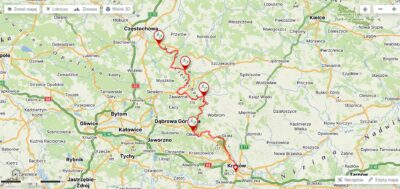
The taste of comfort and adventure!
Group 2 – 4 participants: from 4.290 PLN
Group 5 – 8 participants: from 3.650 PLN
Group 8 -15 participants: 3.450 PLN
Final price varies depending on the dates and hotels availability.
In the comments field, please enter the proposed trip date and number of people. At your request, we can modify the route and scope of services – this need should also be described in the comments field.
Contact us for professional and friendly advice!
Promotional materials do not constitute an offer within the meaning of art. 66 of the Civil Code.